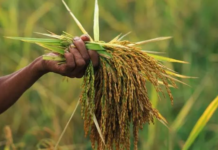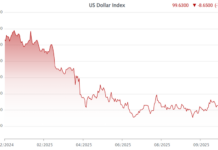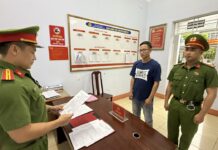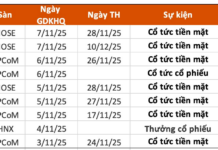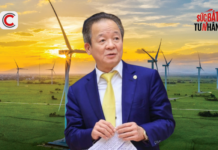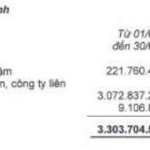At the regular Government meeting in January 2024 (on February 1), chaired by Prime Minister Pham Minh, members of the Government believed that the socio-economic situation in January 2024 continued its positive recovery trend, achieved important and notable results in many fields.
Specifically, the macroeconomy continued to be stable, inflation was controlled, and major balances were ensured. The consumer price index (CPI) increased by 3.37% compared to the same period. The foreign exchange market, the basic exchange rate, was stable; the deposit and lending interest rates maintained a downward trend. State budget revenue reached VND 231 trillion, equal to 13.6% of the estimate.
In parallel, import and export continued to grow strongly. The total import-export turnover reached nearly USD 64.22 billion, up 37.7% compared to the same period, with a trade surplus of USD 2.92 billion. Energy security, food security were ensured (rice exports in January reached USD 347 million, up 86.1% compared to the same period); basic labor supply met demand.
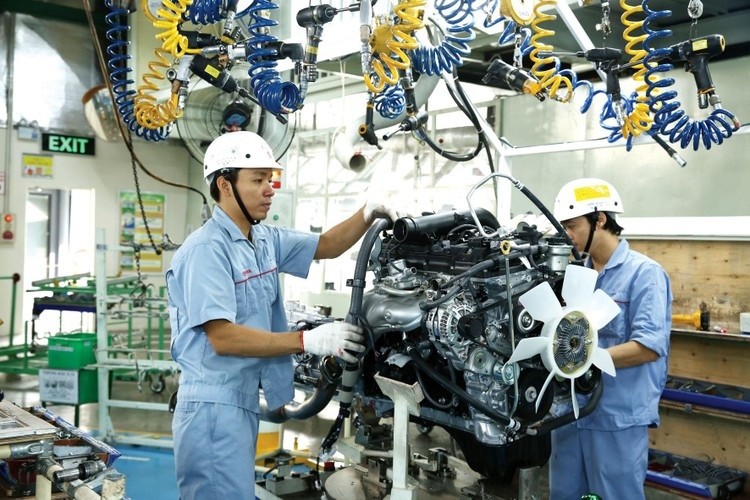
Positive growth in industrial production in January 2024
Especially, the main sectors and fields showed many positive signs. The industrial production index (IIP) increased by 18.3% compared to the same period, of which processing and manufacturing industries increased by 19.3%. Agriculture, forestry, and fisheries production developed steadily; meeting increased demand during Tet.
Trade and services were quite active; the total retail sales of goods and consumer service revenue in January increased by 8.1%, welcoming over 1.5 million international visitors, up 73.6% compared to the same period.
Investment for development continued to achieve positive results. Disbursement of public investment reached 2.58% of the plan, higher than the same period (1.81%). Registered foreign direct investment (FDI) capital reached USD 2.36 billion, up 40.2%; realized FDI capital reached USD 1.48 billion, up 9.6% compared to the same period.
It is worth noting that international organizations continue to have positive evaluations of Vietnam’s growth prospects. “We believe that the biggest shocks to Vietnam’s economy in 2023 seem to be behind us. The economy is ready for recovery this year,” said Ramachandran A.S. (RamC), CEO of Citi Vietnam.
Citi’s leadership also forecasted that Vietnam’s economy will grow by 5-6% this year, with average inflation of 3.5-4%. Thus, in the best case scenario, GDP growth will be equivalent to the National Assembly’s target.

Mr. Ramachandran A.S. (RamC), CEO of Citi Vietnam
Further analysis by Citi Vietnam’s economic experts shows that the current supply chain shift could support Vietnam’s exports and industrial production in 2024. Accordingly, exports are expected to recover after a 5% decline last year.
“External demand may continue to be weak as global GDP growth slows down, however, Vietnam continues to benefit from the supply chain restructuring process, thereby expanding the penetration capacity of export industries,” said a Citi representative.
Regarding industrial production, Citi said that it is fundamentally stable with industries classified by the bank as “export-oriented” such as textiles, footwear, and electronics leading compared to “domestic-oriented” industries like basic materials and automobiles.
Foreign direct investment (FDI) in the manufacturing sector remains strong in 2023 despite slower growth. This leads Citi to believe that FDI inflows into the manufacturing sector will continue to be abundant in 2024 and Vietnam’s story as a new manufacturing hub in the world remains intact.
Looking ahead, Citi expects annual industrial cost pressures to return to normal and positive changes in 2024. In terms of food, the demand for rice from neighboring economies, which is still high, can affect domestic prices, but Vietnam’s rice production has long shown good recovery capacity against El-Nino.
For real estate, Citi said that although it has stabilized in the second half of 2023, it is still difficult to recover according to the V-shaped chart. After a decline at the beginning of last year, real estate transactions began to increase in the second half of the year thanks to interest rate cuts and the implementation of new debt restructuring regulations. Citi believes that the social housing segment has recovery potential due to Vietnam’s low urbanization rate and strong FDI inflows.
Citi also noted that credit demand is gradually recovering along with GDP growth prospects and normalization of production costs, which naturally increases the demand for working capital credit. Vietnam’s trade surplus may narrow in 2024 as domestic demand recovers. Therefore, Citi forecasts that the surplus in the current account will decrease from the estimated 6% of GDP in 2023 to a feasible level of 4%.
“Vietnam’s medium and long-term prospects are very strong. Each country has its destiny and there are always special opportunities that sometimes arise. Vietnam is currently experiencing this,” added Mr. RamC.



